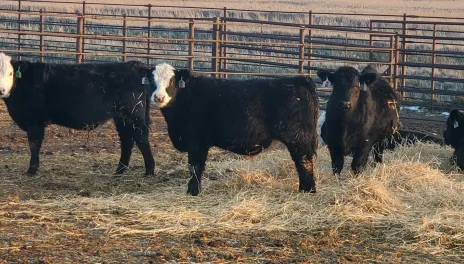24th Annual Dakota Feeder Calf Show Set and Feedout Begins October 15
The Dakota Feeder Calf Show and Feedout was started to determine how well North Dakota calves grow past weaning. After 23 years of comparing calf performance, North Dakota cattle ranchers are finding superior growth and carcass characteristics. Since cow herd genetics can change over time via bull and heifer selection, sending cattle to the Dakota Feeder Calf Show and Feedout gives ranchers information on how their selections are advancing their herd.
Interested consignors will deliver 500- to 700-pound steer calves before 10 a.m. CST on the day of the show, October 15, 2022. Each producer can consign one or two pens containing three or four calves each. The calves are exhibited and evaluated that afternoon and then shipped to the NDSU Carrington Research Extension Center feedlot to be fed to finished market weight.
NDSU Extension and the Carrington Research Extension Center partner with the Dakota Feeder Calf Show to provide producers an opportunity to experience retained ownership of calves beyond the cow-calf segment of cattle production.
There are several ways to collect growth performance carcass data from calves: the best way is to feed out the entire calf crop, which takes considerable time, effort and funds. An alternative is to consign a group of calves to a feedout project where risk is decreased and the project provides a substantial amount of information about the calves.
During the 2021-22 feedout, the calves gained an average of 710 pounds in 220 days, with a total feed cost (excluding interest) of $1.22 per pound of gain. The average sale weight was 1,290 pounds. The calves were fed with a market weight break-even point of $142.84 per hundredweight.
It's the variation among cattle that makes this project educational and a real eye-opener. In the 2021-22 feedout, the spread in net return per head between the average of the top and bottom five herds was $179.66. The spread between the very top and bottom-most herd is more noticeable at $255.75 per head. Average daily weight gain in the feedlot was 3.07 pounds for the top-profiting herd and 2.79 pounds for the bottom herd. Small differences in production have a huge impact on profit.
CREC staff gather data on the rate of gain, feeding costs and other characteristics during the trial. After the calves are marketed, staff collect and provide information to the entrants on carcass weight, meat quality, feeding expenses, and value.
Calves that will enter this year’s Feedout should be prevaccinated for BVD, PI3, IBR and BRSV; Mannheimia; Clostridials; and histophilus somni. Booster vaccinations will be administered upon delivery to the show. Producers will be assessed an entry fee of $20 per calf. Dakota Feeder Calf Show officials will present awards to producers at the end of the trial.
For more information or to preregister calves, contact Karl Hoppe at 701-650-8810, Colin Tobin at 701-652-2951, or Darwin Chesrown at 701-448-9286.

